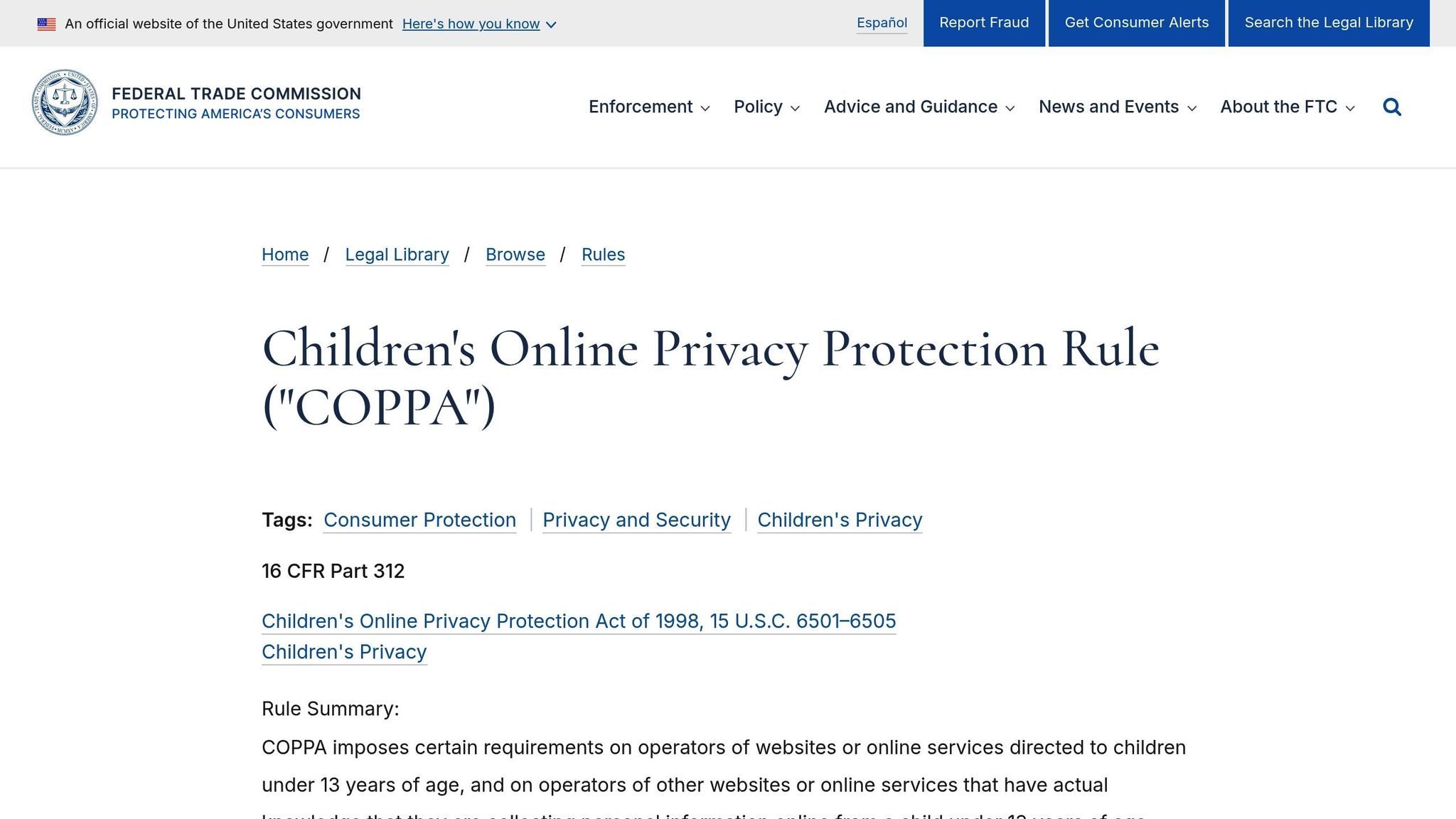AI is revolutionizing content moderation, especially for businesses, by automating tasks like spam filtering and identifying harmful content. But it comes with risks:
- Bias in AI systems can lead to unfair moderation decisions.
- Lack of transparency makes it hard to explain or challenge AI decisions.
- Over-moderation often removes legitimate content, disrupting communication.
- Privacy concerns arise due to the vast amount of user data AI systems process.
- Evolving regulations make compliance a moving target.
Failing to address these risks can result in fines, lawsuits, reputational damage, and operational disruptions. To mitigate these issues, companies should combine AI with human oversight, conduct regular audits, and ensure clear communication with users. For B2B platforms, tailored policies and specialized training are essential to balance effective moderation with compliance.
Can AI solve content moderation and regulatory compliance for platforms in 2023?
Main Compliance Risks in AI Content Moderation
AI moderation systems bring a host of compliance challenges that can expose companies to legal, regulatory, and operational risks. These challenges are particularly evident in the areas outlined below.
Bias Problems in AI Systems
AI moderation systems often inherit biases from their training data, which can lead to discriminatory practices and potential violations of civil rights laws. For example, these systems might unfairly flag content from certain demographic groups or misinterpret legitimate business communications.
Bias can show up in several ways: language bias, where regional dialects or industry-specific terms are wrongly flagged; cultural bias, where culturally specific expressions are misjudged as violations; and demographic bias, where content from certain ethnic, gender, or age groups is disproportionately moderated. On B2B platforms like The B2B Ecosystem, these biases can interfere with professional networking, job postings, and business discussions, leaving platforms open to discrimination lawsuits or regulatory scrutiny.
Lack of Clear Decision Explanations
Another major issue is the lack of transparency in AI decision-making. Many moderation systems function as "black boxes", making it difficult to explain how decisions are made. This becomes a compliance headache when users challenge moderation outcomes or when regulators demand detailed explanations.
For example, during appeals, users often receive vague responses like "policy violation" or "inappropriate content", which fail to meet consumer protection guidelines. This lack of clarity can complicate regulatory audits, which often require detailed documentation of decision-making processes. Additionally, as more states push for algorithmic accountability and require explainable AI, platforms may face growing pressure to provide meaningful and understandable explanations for their automated decisions.
Removing Too Much Content
AI moderation systems often err on the side of caution, which can lead to the removal of legitimate content. This over-moderation is particularly problematic in professional contexts, where technical jargon, product specifications, or detailed business discussions might be mistakenly flagged.
On B2B platforms, such aggressive filtering can disrupt business communications, potentially damaging professional relationships and opportunities. The legal risks increase when over-moderation affects protected categories of speech, such as discussions about workplace policies, union activities, or whistleblower reports.
User Data Protection Problems
AI moderation relies on processing vast amounts of user data, which can create privacy compliance risks under federal and state laws. For instance, the Children's Online Privacy Protection Act (COPPA) requires strict safeguards when processing data from users under 13, including parental consent and age verification - areas where AI systems may fall short.
State laws like the California Consumer Privacy Act (CCPA) and the Virginia Consumer Data Protection Act add further complexity. These laws demand transparency in data processing, user consent for certain automated decisions, and adherence to data minimization principles. However, AI moderation systems often need extensive access to data, creating potential conflicts. Cross-border data transfers further complicate compliance, especially under international privacy regulations.
Keeping Up with Changing Rules
The regulatory landscape for AI and content moderation is evolving quickly, creating constant compliance challenges. New laws, such as the proposed Kids Online Safety Act, could introduce requirements like mandatory safety features and regular audits, forcing companies to adapt their systems as these laws come into effect.
State-level regulations add another layer of complexity, with varying requirements for AI transparency, bias testing, and user rights protections. Industry-specific rules, such as those in financial services or healthcare, can further complicate compliance efforts. Updating AI systems to meet these shifting standards demands significant resources, making it difficult for companies to stay ahead of the curve in this rapidly changing environment.
US Laws Affecting AI Content Moderation
U.S. federal laws play a significant role in shaping the rules and requirements for AI-driven content moderation. These laws outline specific responsibilities that platforms must follow to stay compliant.
Children's Online Privacy Protection Act (COPPA)

The Children's Online Privacy Protection Act (COPPA) mandates that companies obtain verifiable parental consent before collecting, using, or sharing personal information from children under the age of 13. This law pushes companies to implement robust age verification systems and provide clear, easy-to-understand privacy notices before gathering any data. For platforms using AI for moderation, this creates a unique challenge: they must ensure automated systems can effectively manage content while adhering to strict data control and transparency requirements.
Section 230 of the Communications Decency Act
Section 230 is a cornerstone of internet law, offering platforms legal protection by shielding them from liability for content posted by users. This protection also extends to AI-driven moderation efforts, as long as they are conducted in good faith. However, there are limits. Section 230 does not protect against claims involving discrimination or violations of other federal laws. To navigate these complexities, companies must carefully document their moderation policies and ensure their practices strike a balance - minimizing harmful content without overstepping into excessive censorship. Understanding these boundaries is essential for maintaining compliance while fostering an open platform.
New Laws: The Kids Online Safety Act
A proposed bill, known as the Kids Online Safety Act, could introduce additional requirements for platforms handling content related to minors. If passed, the legislation may compel platforms to strengthen safety measures for younger users and provide greater transparency about how AI systems handle sensitive or harmful content. While the specifics of the bill are still in development, it highlights the importance of staying informed about legal updates and being ready to adjust moderation practices as new rules take shape.
sbb-itb-01010c0
How to Reduce Compliance Risks
Tackling compliance challenges requires a mix of smart strategies and thoughtful oversight. By blending AI automation with human judgment, organizations can curb the risks of hasty or biased decisions. From routine system checks to open communication with users, these steps create a solid foundation for managing compliance risks effectively.
Combining AI with Human Review
AI can quickly identify content that might be problematic, but some decisions need a human touch. For complex or sensitive cases, having humans review flagged content ensures moderation choices are more deliberate and balanced.
Regular AI System Reviews
Consistent evaluations of AI systems are key to keeping them reliable and fair. Regular audits help uncover potential biases, ensure accountability, and promote transparency, all while driving ongoing improvements. These technical reviews should also analyze system performance, allowing organizations to adapt to new risks or evolving patterns of harmful content.
Clear User Communication and Appeals
Building trust with users starts with clear communication. Offering straightforward explanations and accessible appeal processes fosters confidence in moderation practices. Advances in generative AI are also helping to improve how violations are detected and clarified, making the entire process more transparent and effective.
Best Practices for B2B Networks Using AI Moderation
B2B networks manage professional communications, business-critical content, and industry-specific discussions. These areas require a tailored approach to ensure compliance and effective moderation. Here’s how to address these unique challenges.
Following Industry Standards
The Santa Clara Principles provide a solid foundation for transparency and accountability in content moderation. These principles focus on three key areas: publishing clear community guidelines, sharing data on enforcement actions, and offering meaningful appeal processes.
For B2B networks, this means crafting policies that reflect professional conduct, intellectual property concerns, and industry-specific regulations. Transparency is essential - networks should publish quarterly reports detailing moderation statistics, including false positive rates and the outcomes of appeals. Such transparency reassures business users, who need to trust how their professional content is assessed.
Timely communication is another critical factor. Providing specific explanations for moderation decisions within 24 hours allows business users to address compliance issues or adjust strategies promptly.
Leveraging Risk Analysis and Compliance Tools
Specialized compliance tools help B2B networks identify potential risks before they escalate into violations. For example, The B2B Ecosystem offers risk analysis solutions that integrate seamlessly with existing moderation workflows. These tools use financial and market data to generate automated risk scores.
Such tools are particularly effective for monitoring high-risk content categories, like financial services discussions, healthcare claims, or legal advice. The Risk Analyzer tool from The B2B Ecosystem scores content for compliance risks, enabling networks to prioritize which items need immediate human review. High-risk content can then be routed to moderators with relevant expertise, ensuring accurate and informed handling.
These automated systems work best when paired with skilled moderation teams, creating a balance between technology and human judgment in complex business contexts.
Training Moderation Teams
Effective moderation in B2B networks requires specialized training in industry regulations, professional communication norms, and the limitations of AI tools. Moderators must be well-versed in the standards of business communication and equipped to handle the nuances of professional networking.
Regular training sessions are essential to keep teams updated on new regulations and advancements in AI technology. Cross-functional collaboration is also key. Moderators benefit from working closely with legal, compliance, and business development teams to deepen their understanding of business-specific challenges. This teamwork helps moderators navigate complex scenarios and make better decisions in edge cases.
Additionally, moderators need to understand the limitations of AI systems. Training should cover recognizing bias patterns, identifying false positive triggers, and knowing when to escalate decisions for human review. This knowledge allows moderators to use AI tools effectively while maintaining compliance and fairness in their decision-making processes.
Conclusion: Managing AI Compliance Challenges
AI content moderation brings a host of compliance challenges, including algorithmic bias, unclear decision-making processes, and overly aggressive content removal practices. Successfully navigating these issues requires a fine-tuned balance between technological efficiency and human judgment.
Failing to address compliance risks can have serious consequences - regulatory fines, damaged reputations, and eroded user trust. According to Bynder's State of DAM report, compliance is a top concern for 47% of brands, with 50% prioritizing risk management and 55% emphasizing content quality control.
Tackling these challenges calls for a proactive and layered strategy. Combining the speed and scale of AI with human oversight ensures more thoughtful decision-making. For instance, Pernod Ricard has successfully integrated AI-driven moderation tools alongside human reviewers, streamlining workflows and boosting the return on investment for their content efforts.
Transparency and accountability are key pillars in achieving compliance. Organizations need to clearly explain moderation decisions, offer accessible appeals processes, and regularly audit their systems to detect and address biases. This level of transparency is especially critical as regulations continue to evolve. Communications expert Manisha Mehta underscores this point:
While AI offers efficiency, without proper governance it can introduce significant reputational and compliance risks.
Staying compliant also means keeping pace with federal laws and industry regulations. Companies that actively monitor legal changes, engage in industry discussions, and update their systems accordingly will be better equipped to adapt to shifting standards.
For platforms like The B2B Ecosystem, which manage professional interactions and business-critical content, the stakes are even higher. These platforms must strike a delicate balance - effective moderation without stifling legitimate business communication. Achieving this requires tailored training, industry-specific policies, and advanced tools for risk assessment.
FAQs
What steps can businesses take to reduce bias in AI-powered content moderation systems?
To make AI-powered content moderation systems fairer, businesses need to focus on creating training datasets that reflect a broad and diverse range of perspectives. This step is critical to minimizing bias and ensuring the system works effectively for everyone.
Another key practice is regular audits and performance monitoring. These help spot and correct any unintended biases that might creep in over time. Adding human oversight to the moderation process also brings a much-needed layer of fairness and accountability, ensuring decisions are not left solely to algorithms.
Involving a mix of stakeholders during the development phase can further improve outcomes. By including diverse voices, companies can identify potential blind spots early and ensure their system adheres to ethical principles. Together, these measures can lead to more balanced and fair AI moderation systems.
How can businesses ensure transparency and fairness in AI-driven content moderation?
To ensure openness and fairness in AI-driven content moderation, businesses can take several practical steps. For starters, they should clearly disclose when AI is being used in moderation processes and offer straightforward explanations about how decisions are made. Regularly reviewing algorithms, utilizing Explainable AI (XAI) methods, and sharing well-defined moderation policies are also essential actions.
These efforts not only build user trust but also help companies stay compliant with regulations while showing a commitment to responsible AI practices. By focusing on transparency, businesses can align their operations with industry expectations and contribute to a fairer online space.
How can B2B platforms effectively use AI for content moderation while staying compliant with evolving regulations?
B2B platforms can maintain a balance between AI-driven content moderation and staying compliant with regulations by keeping a close eye on legal updates like the FTC Act or the TAKE IT DOWN Act. Staying informed ensures they can adjust practices to meet current legal standards.
Using a combination of AI tools and human oversight is key. This approach not only improves the accuracy of moderation but also helps address ethical concerns, reducing the chances of falling out of compliance. Additionally, having clear, transparent policies and providing ongoing training for moderation teams equips platforms to adapt quickly to regulatory changes. By focusing on compliance and effective moderation, businesses can minimize legal risks while building trust with their users.


